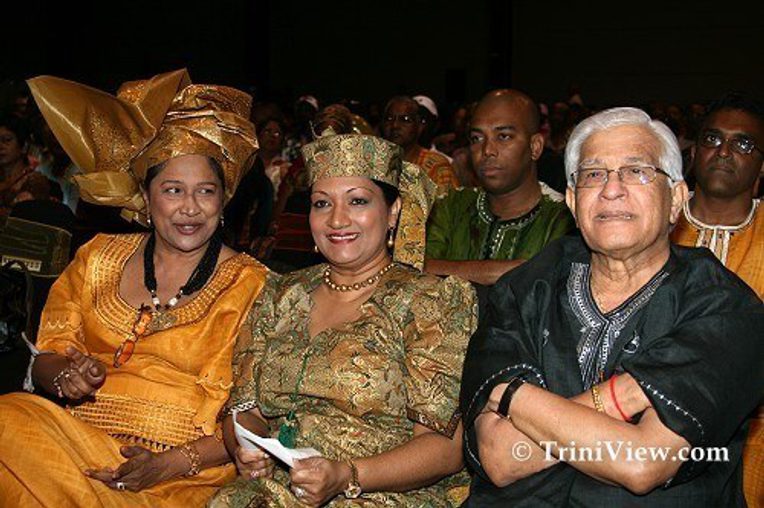This post builds on the research article “Shifting Multicultural Citizenship: Trinidad Orisha Opens the Road,” which was published in the August 2013 issue of the Society’s peer-reviewed journal, Cultural Anthropology.

Editorial Footnotes
Cultural Anthropology has published numerous articles on multiculturalism, including Arlene Dávila's "Latinizing Culture: Art, Museums, and the Politics of U.S. Multicultural Encompassment" (1999); Katherine Pratt Ewing's "Between Cinema and Social Work: Diasporic Turkish Women and the (Dis)Pleasures of Hybridity" (2006); and Marisol de la Cadena's "Indigenous Cosmopolitcs in the Andes: Conceptual Reflections beyond 'Politics'" (2010).
Cultural Anthropology has also published articles about the Caribbean. See, for example, Charles V. Carnegie's "The Dundus and the Nation" (1996); Richard Price and Sally Price's "Shadowboxing in the Mangrove" (1997); and Yarimar Bonilla's "The Past is Made by Walking: Labor Activism and Historical Production in Postcolonial Guadeloupe" (2011).
About the Author
N. Fadeke Castor is a cultural anthropologist that works on issues of decolonization, citizenship, identity, and representation in popular/public culture, new media technology and performance throughout the African Diaspora, specifically in the Anglophone Caribbean. Her book manuscript, “Sacred Imaginaries: Performance and the Decolonization of Blackness,” analyzes how people in the Caribbean negotiate multiple modernities through attention to their religious and performative practices. “Sacred Imaginaries” is based on three years of ethnographic research (2002-2005) on public ritual and festival events in Trinidad, funded by grants from Fulbright-Hays and Wenner-Gren. Her research is based on decade long ethnographic engagements within Trinidad’s Orisha/Ifa communities and her identification of spiritual epistemologies as processes of decolonization that redefine conceptions of blackness, Africanness, and national belonging as Trinidadians perform and negotiate identities beyond inherited colonial hierarchies.
She is also working on “Consuming Blackness Diasporically” (CBD), a collaborative and global project that will bring cultural workers together in a virtual workspace called "The GAYAP." Using ethnography's tools of conversation, story telling, and close readings of cultural context, participants will examine and debate the various cultural histories, new growths, connections and differences across the African Diaspora; initially between Trinidadian Canboulay folk performance and Chicago House music. Charting each tradition’s specific genealogy connected to specific economic, political, and social contexts, CBD will use creativity, technology and expression to map out the potent relationship between decolonization, art, culture, and identity. Ultimately, CBD will provide and model tools for the archiving, dissemination and rights protection of black cultural expressive forms throughout the African Diaspora.

Relevant Links
Cultural activist Pearl Eintou Springer
Inter-religious Organization of Trinidad and Tobago
Trinidad's Two Major Political Parties: People's National Movement and United National Congress
Questions for Classroom Discussion
1. How is multiculturalism understood in Trinidad? How does it differ from U.S. multiculturalism?
2. How does the author understand cultural citizenship? Is there only one cultural citizenship? Why or why not?
3. What is the history of the Orisha religion in Trinidad? Why is Pandey's appearance at the Second Annual Orisha Family Day significant? Why is his identity as Indo-Trinidadian significant?
4. According to the author, "how does a black cultural citizenship intersect with multiculturalism" (476)?
5. The author uses the following terms in her article: African diaspora, blackness, race, and ethnicity. Discuss your understanding of the terms prior to reading the article and after reading it. How has your understanding changed? How does context matter?
6. What role does class play in the author's analysis?
Related Readings
Aiyejina, Funso, and Rawle Gibbons. “Orisa (Orisha) Tradition in Trinidad.” Caribbean Quarterly 45, no.4 (1999):35–50.
Comaroff, John L., and Jean Comaroff. Ethnicity, Inc. Chicago: University of Chicago Press, 2009.
Glazier, Stephen D. Marchin’ the Pilgrims Home: A Study of the Spiritual Baptists of Trinidad. Salem: Sheffield, 1983.
Henry, Frances. Reclaiming African Religions in Trinidad: The SocioPolitical Legitimation of the Orisha and Spiritual Baptist Faiths. Kingston, Jamaica: University of West Indies Press, 2003.
Houk, James. Spirit, Blood and Drums: The Orisha Tradition in Trinidad. Philadelphia: Temple University Press, 1995.
Hucks, Tracey E. “I Smoothed the Way, I Opened Doors”: Women in the Yoruba-Orisha Tradition of Trinidad. In Women in Religion in the African Diaspora, edited by Ruth Marie Griffith and Barbara Diane Savage. 19–36. Baltimore, MD: The Johns Hopkins University Press, 2006.
Khan, Aisha. “Sacred Subversions? Syncretic Creoles, the Indo-Caribbean, and “Culture’s In-between.” Radical History Review 89, no.1 (2004):165–184.
McNeal, Keith E. Trance and Modernity in the Southern Caribbean: African and Hindu Popular Religions in Trinidad and Tobago. Gainesville: University Press of Florida, 2012
Paton, Diana. “Obeah Acts: Producing and Policing the Boundaries of Religion in the Caribbean.” Small Axe 13, no.1 (2009):1–18.
Ryan, Selwyn. The Jhandi and the Cross: The Clash of Cultures in Post-Creole Trinidad and Tobago. St. Augustine, Trinidad: Sir Arthur Lewis Institute of Social and Economic Studies, 1999.